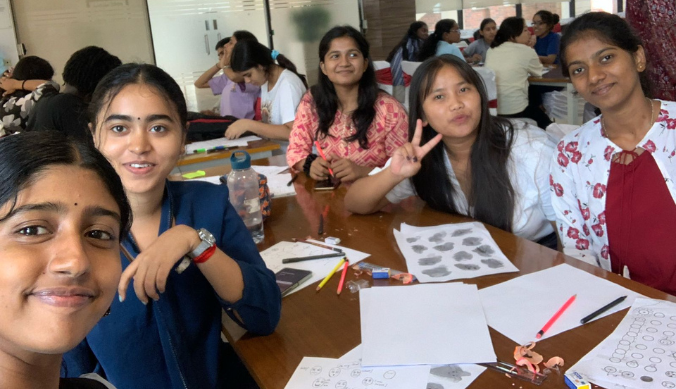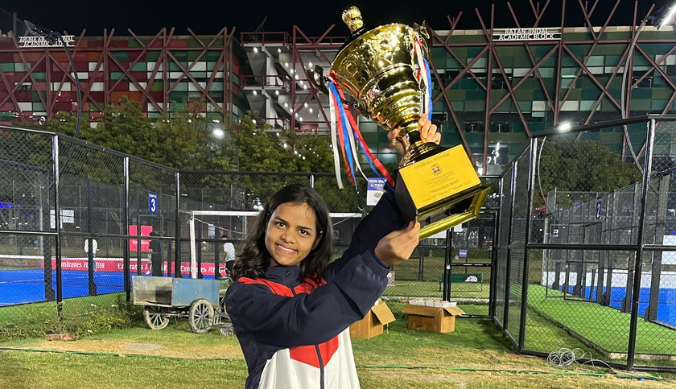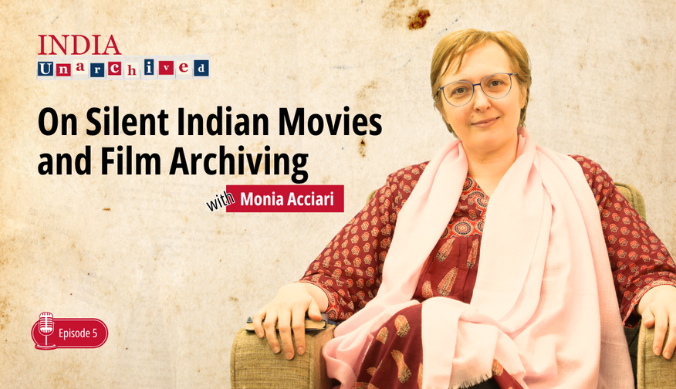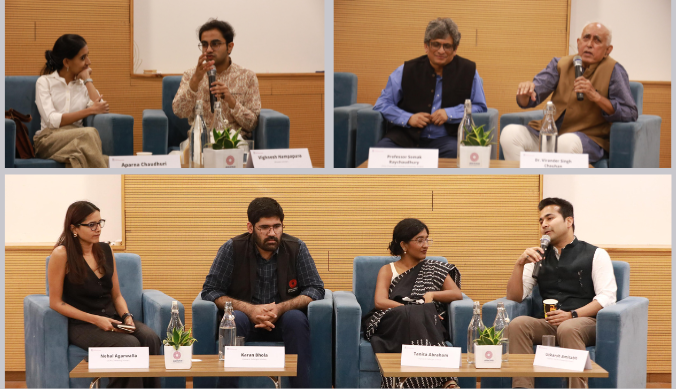EcoSattva’s Blueprint for Climate Resilient Cities: Local Actions, Global Impact
YIF Alumna Natasha Zarine (YIF ‘13) takes River Restoration to TEDxBoston Planet Action Summit, signs MoU with Maharashtra State Government to scale their Climate Action Solutions and practices across the state.
Urbanization, while a driver of economic growth, often places immense pressure on natural resources and public infrastructure. The Kham River in Chhatrapati Sambhaji Nagar exemplified this challenge. Once a vital waterway, the river had deteriorated into a heavily polluted channel due to unchecked development and inadequate waste management. Recognizing the urgency of the situation, EcoSattva Environmental Solutions undertook a comprehensive river restoration initiative, combining blue-green infrastructure with community-driven solutions to address both environmental and social challenges.
This holistic approach has garnered national and international recognition. In 2024, the project was honoured with the St Andrews Prize for the Environment, acknowledging its innovative fusion of environmental restoration and social equity. The mission’s methodologies are now being considered as blueprints for similar initiatives across India, exemplifying how targeted, inclusive action can transform urban waterways into assets that benefit both nature and society.
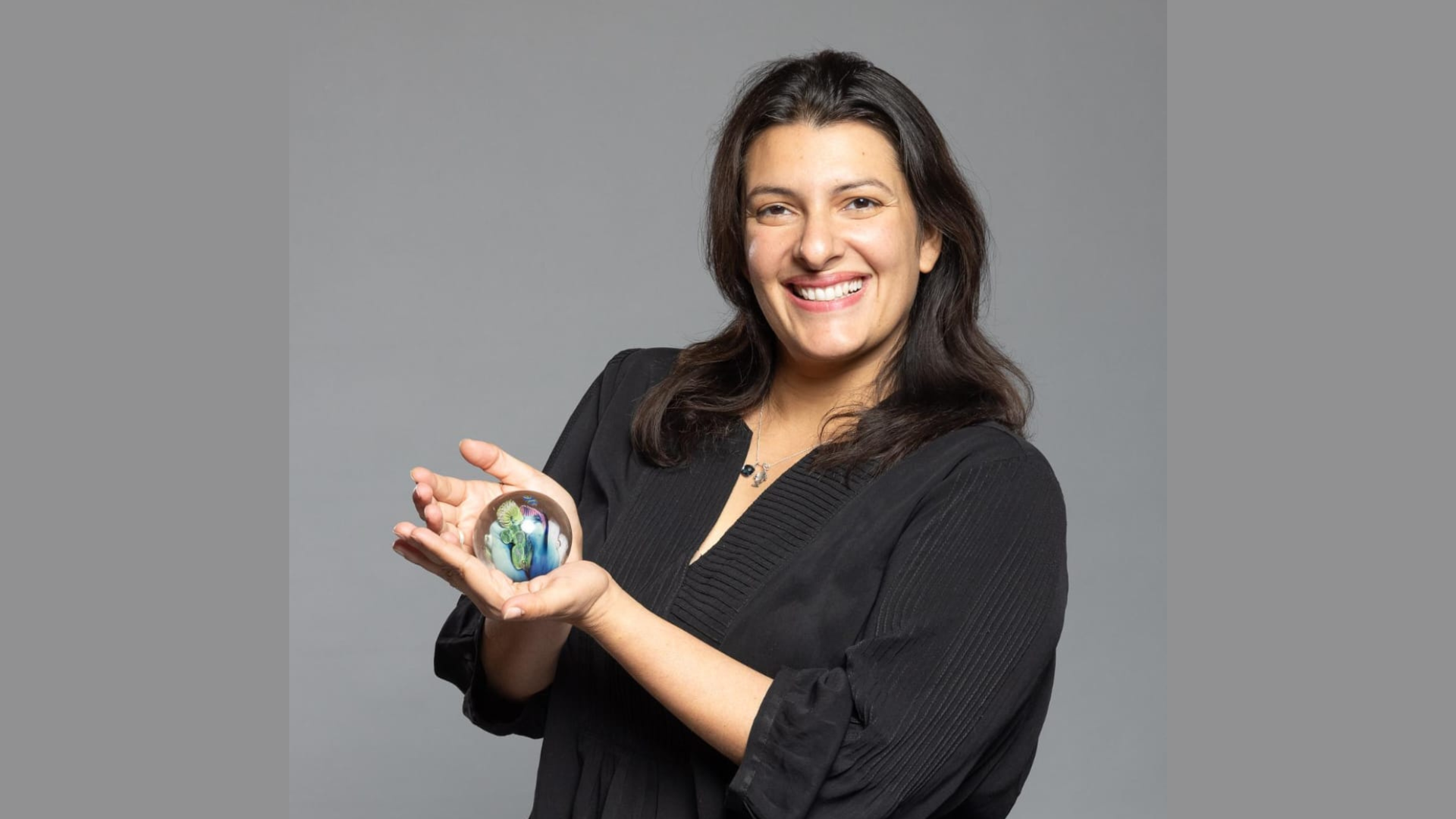
Building on this success, EcoSattva entered into a strategic partnership with the Maharashtra state government. In January 2025, during the World Economic Forum in Davos, Switzerland, Chief Minister Devendra Fadnavis and Natasha Zarine Managing Director and Co-founder, Ecosattva signed a Memorandum of Understanding (MoU) to scale these proven restoration practices across the state.
We recently spoke to Natasha about her beginnings, entrepreneurial journey, experiences, and future aspirations. Here’s what she had to share:
How has your personal and professional journey influenced your environmental conservation mission?
Growing up around the farms of Rai, a village near Dahanu Maharashtra, I first saw the effects of unmanaged sewage and garbage polluting rivers, piles of garbage being burned where my friends, (who were the children of farm workers) lived, and trees being cut down along our roads. These issues only intensified over time, fueling my curiosity to find ways to fix them. My formative experiences with socio-economic inequalities and gender-based violence also strengthened my resolve to work for social and environmental justice.
With these goals in mind, I studied psychology, then law at Mumbai University, trying to understand human behaviour and the legal tools required to create change. Still, something felt missing and then the Young India Fellowship happened. YIF became a turning point for me—it rekindled my love for learning and supported and encouraged me to find solutions for real-world problems at the cusp of social and environmental issues. That spark led me to co-found EcoSattva Environmental Solutions, where we focus on transforming the environmental conditions of cities, towns and villages through systemic solutions for solid waste, ecological sewage treatment, sustainable green spaces and wetland restoration.
My journey started as a naturalist with the Andaman Nicobar Environment Team, and later, along with Gauri Mirashi, I co-founded The Center For Applied Research & People’s Engagement (CARPE) a non-profit company in 2015 and then EcoSattva Environmental Solutions Pvt Ltd to bridge gaps in India’s municipal & civic services impacting solid waste management, green cover management, wetland restoration and climate resilience. While policies like the MSW Rules of 2000 and 2016 set standards, and schemes like the Swachh Bharat Mission & Majhi Vasundhara build momentum, local governments often struggle with implementation. This inspired us to build scalable, data-driven solutions that train local governments, create entrepreneurs and empower the community, driven by our belief that real climate action requires sustainable, on-the-ground solutions that make policies work in everyday life.
How did Ashoka University’s Young India Fellowship shape your approach to sustainable development?
YIF broadened my understanding of sustainability, emphasizing the value of interdisciplinary thinking and stakeholder engagement. This experience reinforced our approach and shaped EcoSattva’s mission to develop inclusive, data-driven strategies addressing environmental, social, and political dimensions of sustainability.
Consequently, we’ve standardized our adaptive solutions and used data triangulation for effective progress monitoring. Our app integrates these insights, offering municipal commissioners, district collectors, and practitioners a dashboard for transparent tracking and impact measurement. The app also allows us to share our BOTRAM(C) method with service providers like Divya’s Initiative India in Surat and McKinsey’s Delterra in Buenos Aires and Bali.
What are EcoSattva’s main focus areas?
At EcoSattva, we focus on:
Solid Waste Management
We address waste management with our BOTRAM method, a comprehensive six-step model that optimizes municipal waste collection, enhances resource recovery, integrates informal sectors, and emphasizes sanitation worker safety and community behaviour change. This approach has successfully transformed waste management across 14 cities in India and regions in Buenos Aires and Denpasar, Bali, delivering cost-effective, safer, and efficient waste systems. However, scaling this model further requires overcoming funding and political hurdles.
Wetland Restoration
Leveraging our BOTRAM framework, we’ve standardized the steps for restoring seasonal wetlands, including rivers, lakes, and ponds. Using our BOTRAM method, we’ve been able to bring life back to places like the Urali Kanchan Nala, Kham River, Kamal Talao, Aditya Talao, Unnati Sarovar, among others. Currently, we are drafting the District Climate Action Plan with a strong emphasis on wetland conservation and management.
Green Cover Management
Our green cover initiatives span ecoscaping, urban forests, riparian zone restoration, and hillside revitalization. We’re creating green spaces where people and nature can thrive together. Notable projects include the Mitthi Riverfront in Mumbai and a five-acre urban forest in Ludhiana, developed for YIF mentor Mr. Sachit Jain.
Could you tell us about your “Kham River Restoration Mission” Model that’s creating waves worldwide?
The Kham River (seasonal river) was once Aurangabad’s lifeline, but over the years, people see it as a gutter/sewer/nala. In an assessment we conducted, 64% of people didn’t know that the river existed and 62% thought it was a nala to carry waste. This shift in perception over the last few decades has erased the river’s true significance. Historically, the Kham River was essential, it supported an underground water system that still works today, There are 16 freshwater springs, a 400-year-old flour mill along its course and many monuments were built along the river bank. And the tragedy is that this isn’t just the story of the Kham River, but most seasonal rivers in the country.
The Kham River Restoration Mission represents a pioneering effort in collaborative environmental stewardship, driven by Chhatrapati Sambhaji Nagar Municipal Corporation, Varroc Industries, the Cantonment Board, and EcoSattva Environmental Solutions. Our team’s work on the Kham River has created a model of urban resilience—integrating riverbank stabilization, waste management, and community involvement to transform neglected spaces into eco-friendly zones. From stabilizing banks and dredging, to creating a 5 km EcoPark featuring wetlands and reclaimed recreational areas, to building shared public spaces, like community-centred riverfront parks, combined with deep ecological restoration, socially integrated waste management and a city-wide cultural campaign. We’ve taken a comprehensive approach to managing waste by targeting critical “Garbage Vulnerable Points” and turning them into community-friendly spaces filled with native plantings and local artwork. The BOTRAM app has become an essential tool here, enabling real-time monitoring and data-driven decisions that keep the project efficient and transparent. Through our training initiatives sanitation staff across 42 wards, have received enhanced waste collection and material recovery skills. We’ve established three new recovery sites to support waste pickers, mostly women, with dignified, safe work environments and professional growth opportunities. This integration has encouraged social cohesion and empowered the community to adopt better waste segregation habits.
Education and cultural revitalisation campaigns are integral to the project, engaging schools through cultural programmes and involving local artisans to instil a renewed sense of civic pride and understanding of the Kham River’s ecological importance. The programme’s inclusion in the River Cities Alliance and recognition by the National Institute of Urban Affairs highlight its influence on regional watershed management and urban planning strategies for seasonal rivers nationwide. Continued stakeholder engagement, robust monitoring practices, and community-driven initiatives position the Kham River Restoration Project as a sustainable model for integrated urban river management, demonstrating significant progress towards environmental resilience and community well-being. It’s more than cleaning a river, it’s about reconnecting people to its heritage, purpose and potential.
Global Recognitions and Awards
The Kham River Restoration Mission was honoured with the WRI Ross Prize for Cities at New York Climate Week during the UN General Assembly on September 25, 2024. From 200 applicants across 148 cities across 62 countries, our work was showcased alongside finalists and prize winners like Oslo, New York, Buenos Aires and Fortaleza at Yale’s Hixon Center for Urban Sustainability, with plans for Yale to document and publish our journey as a case study for future climate professionals. in English and Hindi, underscoring how partnerships can drive transformative environmental change. Adding to this recognition, the mission has also won the prestigious 2024 St Andrews Prize for the Environment, celebrating our climate-resilient riverfront development, pollution control, waste recovery, and community engagement. Chosen from 125 global projects, this award from the University of St Andrews affirms our commitment to sustainable urban transformation.
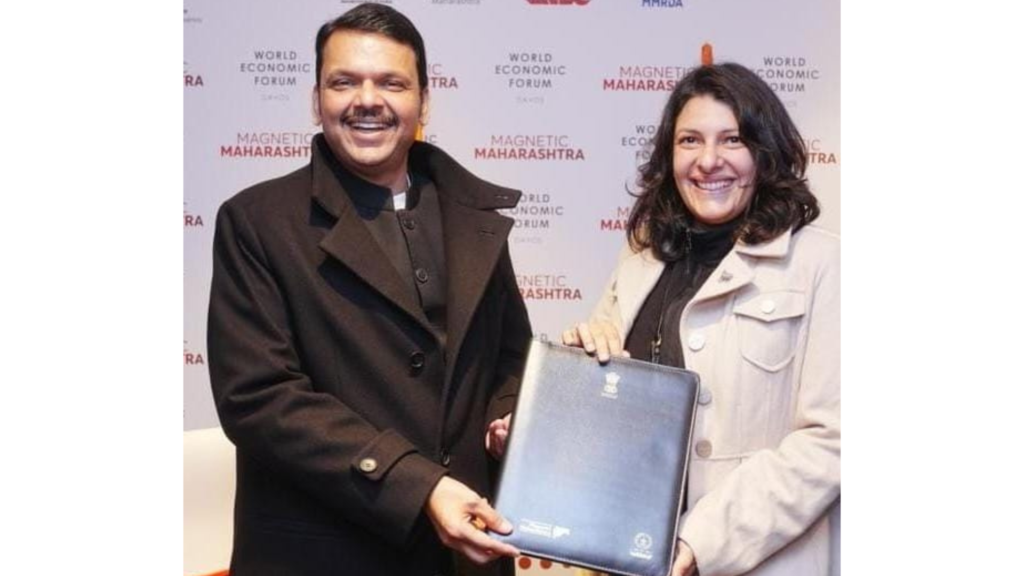
What impact has EcoSattva had on local communities and the environment, and what were the major learnings from the Kham River Restoration Mission?
Our work on the Kham River has transformed both the local community and the environment. By restoring the river, reducing flood risks, and connecting thousands of households to waste management services, we’ve seen tangible benefits for people and nature alike.
Impact Highlights:
- 126 Cities, Towns & Villages impacted
- 95,000 tonnes of recyclables managed
- 259000 saplings planted
- 14 Wetlands systems impacted
- 365,000 livelihood days generated
Through these efforts, we’ve fostered cleaner waterways, greener landscapes, and stronger community connections. Achieving these outcomes required a comprehensive approach that balances ecological health, economic sustainability, and social equity. With stable partnerships, blended finance, and standardized, tech-enabled processes, we are laying the foundation for replicating this success in other areas.
How does EcoSattva achieve 90% waste recovery?
EcoSattva uses science and technology to drive real, lasting change in waste management and ecological restoration. Our in-house BOTRAM App, which powers data-driven waste management, has helped us reach a 90% waste recovery rate. We also use GIS to monitor projects like the Kham River Restoration, so we can ensure that every solution we implement is efficient, scalable, and resilient.
The BOTRAM approach, combined with strong community engagement, formalizes waste management systems and supports informal workers by creating dignified jobs. This way, we’re not only improving recovery rates but also fostering meaningful, sustainable change.
What’s next at EcoSattva?
At EcoSattva, we’re expanding our wetlands restoration along the entire length of the Kham River, neighbouring rivers, and local lakes and ponds. Our BOTRAM app is central to this scale-out plan, and we’re ready to train other district governments and organizations to replicate this model for a broader impact. The State Climate Action Cell has tasked us with developing a District Climate Action Plan focused on wetlands. This model will serve as a template to guide climate resilience work across other districts, addressing flood and drought readiness, sustainable agriculture, and improving waste management while strengthening governance. In restoring our wetlands, we are effectively revitalizing our districts, preparing them for future climate uncertainties, while simultaneously improving current health and environmental conditions.
To fully restore the 52 km Kham River stretch, we’re raising INR 100 crore, with INR 26 crore already secured.
I’m also exploring a partnership with Ashoka University to create hands-on learning opportunities through internships, placements, and research, and to train future environmentalists and entrepreneurs. We aim to leverage real data from our fieldwork for impactful publications, an area we often push aside due to our implementation focus. This partnership could drive not only practical solutions but also encourage new research to support sustainable change.
What’s your call to action?
Our call to action is to direct our attention to seasonal wetlands. They are ubiquitous and are key to preparing for the climatic uncertainties ahead. By focusing on wetlands, we strengthen essential services and fill critical gaps in governance and policy – all while keeping people at the heart of our efforts. To achieve this, we need the government to actively channel programs like Start-up India, Make in India, and PMKVY towards wetland restoration. This approach would address environmental issues, create green jobs, support local start-ups, and help meet SBM, MVA, and SDG goals in tangible ways.
For every ton of plastic recovered, we can create 10 jobs. Every acre greened creates 2 jobs and every kilometer of wetland restored creates 15 jobs. Plus, the savings from reducing health risks and disaster impacts would be immensely significant. Investing in our wetlands means investing in a resilient future for our communities and economy.
Tell us about the TEDxBoston Planet Action Summit.
The TEDxBoston Planet Action Summit panel at the MIT Computer Science and Artificial Intelligence Laboratory was an incredible experience for me. I got the invite after attending the “New York Climate Week” to accept an award for our project Kham River from the WRI Ross Center Prize for Cities. Alison Sanders, who was on the organizing committee for TEDxBoston, approached me there and invited me to speak a month later at TED. At first, I was hesitant about travelling all the way to the US just for a TED talk, but Alison’s encouragement and my team’s belief in the exposure it would bring to the topic of wetlands and seasonal rivers convinced me to go for it.
At the event, I was one of 70 speakers from around the world, the only one from India and probably Asia. I shared visuals from the field and was candid about our failures and successes. From rewilding and regenerative practices to partnership and community engagement, highlighting how projects like ours can inspire global solutions to protect and restore our natural world. The audience’s positive response was incredibly encouraging. The event was full of brilliant minds—from indigenous leaders sharing timeless wisdom to scientists and innovators showcasing cutting-edge solutions. What stood out most was the diversity of ideas and approaches—every speaker and organization brought something unique to the table. Whether it was restoring ecosystems, rethinking how we align human and planetary health, or scaling impactful solutions, the passion and commitment were palpable.
Advice for aspiring environmentalists?
In India, there’s a huge scope for those passionate about environmental work, and we need to build an URGENCY to drive change on-ground.. Funding can be challenging and the attitudes of funders/partners can be difficult and painful, but there’s potential to build a fulfilling career—especially if you approach it practically. For example, using grants as catalyst funds, and harnessing Govt finances for on-ground implementation. The key is building relationships with government officers and aligning your work with their schemes, and then getting them to spend effectively.
The field teaches you much more than theory and policy. It shows you what works, what doesn’t, and what’s needed for sustainability, and then those learnings need to feed back into policy. My advice to aspiring environmentalists is to be ready to work on the ground. Even if you want to do policy-level work, start with implementation. The space is endless—whether it’s talking to people, starting a lobbying group, building products and services or using AI for monitoring. Find the issue that excites you, and work on solving it because there are endless problems out there. Focus on making an impact where you are, and don’t be bogged down by the magnitude of the challenges. One step at a time.
About EcoSattva
CARPE and EcoSattva focus on building inclusive and sustainable communities by delivering evidence-based, partnership-driven solutions to pressing civic challenges. Their primary focus areas include water body restoration, green cover management, and solid waste management—all aligned with their vision for a sustainable world.
Through their projects, they have undertaken efforts such as cleaning rivers and other water bodies, establishing eco-friendly sewage treatment projects, and offering sustainable solutions for green cover and waste management.
Study at Ashoka










